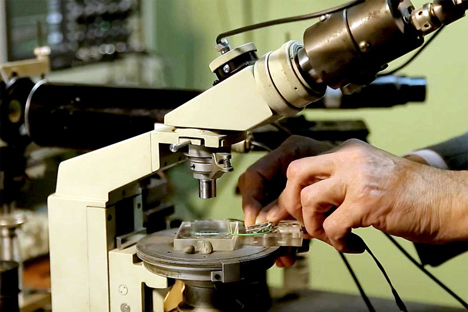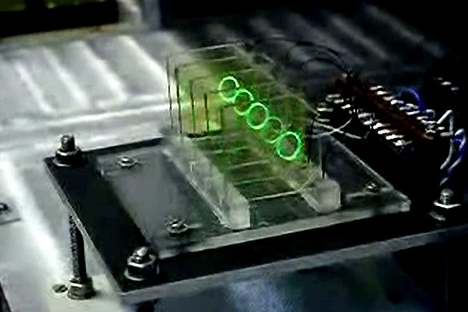
Igor Kompanets. Source: Press photo
Igor Kompanets is head of the opto-electronics division at the Lebedev Physical Institute of the Russian Academy of Sciences, and an honorary director of the Russian branch of the International Society for Information Display (SID). He is a leading specialist in the field of opto-electronics, and has contributed a great deal to the development and creation of new opto-electronic devices for the display and processing of information. He is the author of nearly 250 scientific articles and reports, three monographs, and over 70 invention certificates and patents. You may contact Igor by e-mail: kompan@sci.lebedev.ru
Today, in addition to 3D, the film industry is able to make 4D and 5D video. Thanks to a combination of stereoscopic 3D-movies and physical effects synchronized with various film sections, viewers can experience the sensation of movement, vibration, spraying water and smells. We are interested in something completely different, however. We are creating technology that makes it possible to see 3D images without 3D glasses. This will allow viewers to avoid eye or nerve fatigue, and they will have immediate access to the image. They will even be able to look deep into the screen itself.
To achieve this, we created fast-acting crystals that dissipate and transmit light, and which have outpaced any similar technology in the world by at least 5 years.

Creating fast-acting crystals. Source: Press photo
The screen of the future is not a flat panel, but rather a sort of aquarium. If you walk around it, from various sides and angles you will see a single luminous image formed inside something resembling an `aquarium,’ as if by cross-sections. Each is visible thanks to liquid crystals activated from a transparent to dissipative state of light by electric voltage (a movie screen sends out a constant stream of light). If all of the cross-sections are on and rendered visible with a frequency of over 25 frames per second, then moving objects can be observed in an `aquarium’ as a single whole.
The liquid crystals used in modern displays and projectors maintain speeds of no more than 120 frames. In order to create 3D displays with a 3D visualizer we developed new liquid crystalline materials – smectic crystals that can dissipate and transmit light 20 times faster.

Creating fast-acting crystals. Source: Press photo
By applying voltage pulses of just ±1.5 volts to the smectic crystals, we achieved the light transmission frequency of 3.5 kHz that is necessary for the video projection speed to work.
3D displays can be used outside the film industry as well. They will be in demand in the space and aviation industries, for 3D simulators, scanning, 3D printing, and various interactive toys. Creating a family television with a higher frame rate may also be possible. Different members of the family will be able to watch on one screen the various television programs that they find interesting. Very soon, we plan to bring the development of new materials and devices to the stage of prototype creation.
Edited by Svetlana Arkhangelskaya
All rights reserved by Rossiyskaya Gazeta.
Subscribe
to our newsletter!
Get the week's best stories straight to your inbox